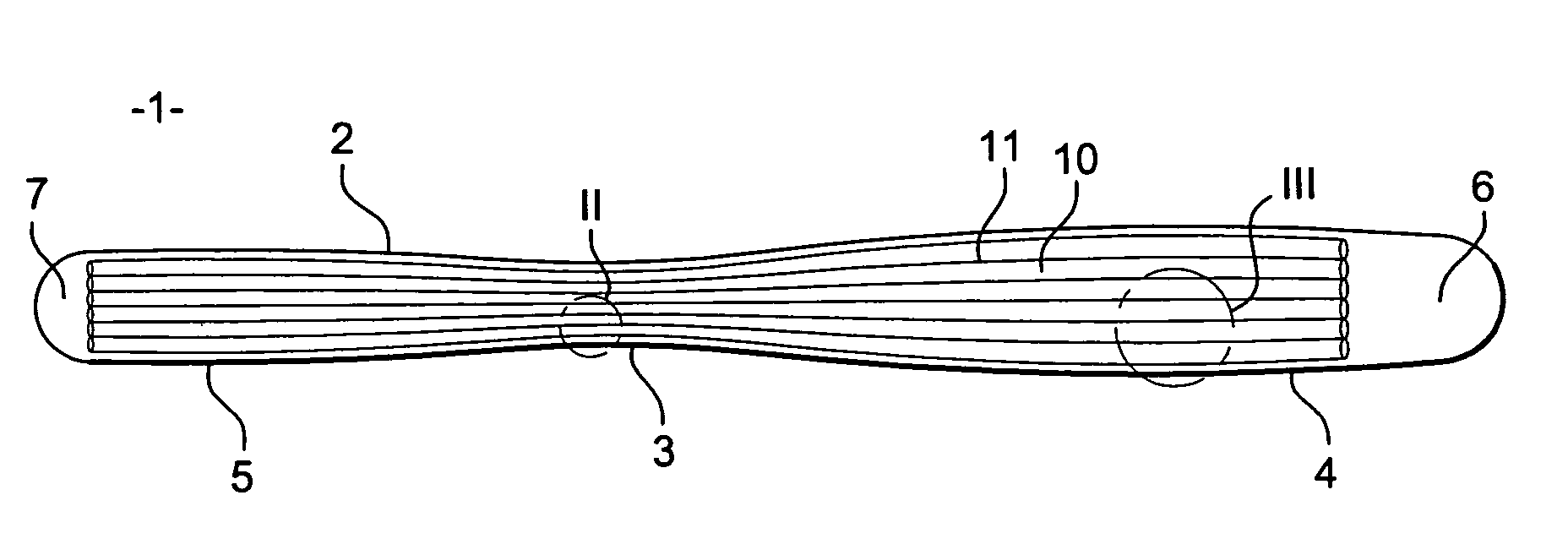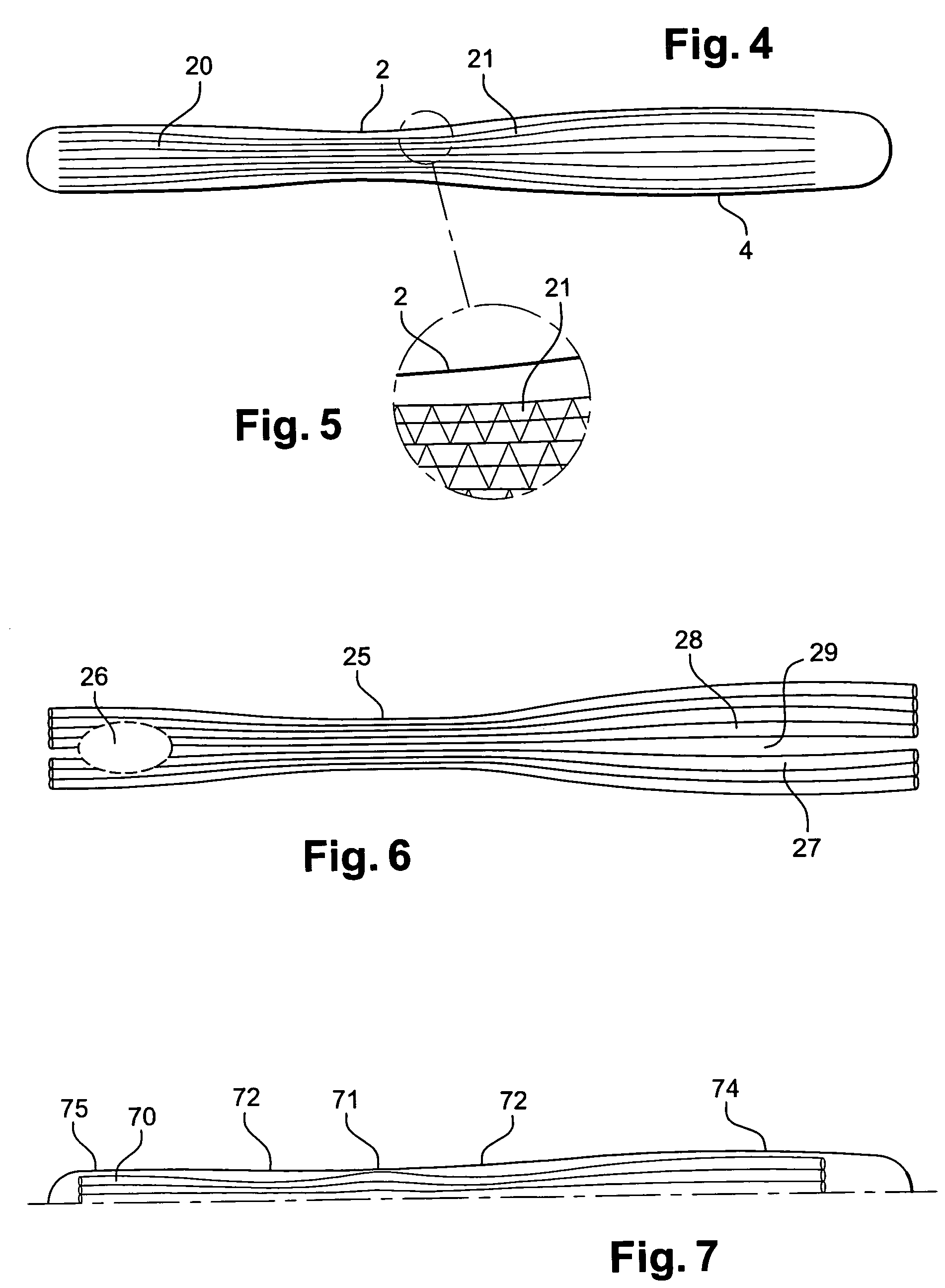Gliding board
a technology of gliding boards and gyroscopes, which is applied in the field of manufacturing gliding boards, can solve the problems of fraying risks, visual imperfections, and the need to scrap the board, and achieve the effects of increasing the stiffness of the board, less in the widest area of the board, and increasing the reinforcemen
- Summary
- Abstract
- Description
- Claims
- Application Information
AI Technical Summary
Benefits of technology
Problems solved by technology
Method used
Image
Examples
Embodiment Construction
[0046]As shown in FIG. 1, a gliding board (1) has a sidecut (2) that corresponds to the lateral edges of the board and which is not straight. In fact, this sidecut (2) widens from the middle area (3) of the board towards the ends of the board.
[0047]This sidecut widens as far as point (4), the point of maximum width located towards the front of the board. The sidecut also widens towards the rear until a point of maximum width (5) is reached. Generally speaking, the ends of the board are upwardly-curved tapering areas that form a nose (6).
[0048]On certain types of skis, the rear end (7) may also be curved in order to form a rear ski-tip which is generally less raised.
[0049]The structure of the gliding board comprises, as stated earlier, a reinforcing fibre mat formed by a textile complex (10) essentially comprising yarns (11) oriented in the longitudinal direction of the board. These yarns (11) generally consist of high-tenacity yarns, especially glass yarns, but without excluding mat...
PUM
| Property | Measurement | Unit |
|---|---|---|
| width | aaaaa | aaaaa |
| width | aaaaa | aaaaa |
| width | aaaaa | aaaaa |
Abstract
Description
Claims
Application Information
 Login to View More
Login to View More - R&D
- Intellectual Property
- Life Sciences
- Materials
- Tech Scout
- Unparalleled Data Quality
- Higher Quality Content
- 60% Fewer Hallucinations
Browse by: Latest US Patents, China's latest patents, Technical Efficacy Thesaurus, Application Domain, Technology Topic, Popular Technical Reports.
© 2025 PatSnap. All rights reserved.Legal|Privacy policy|Modern Slavery Act Transparency Statement|Sitemap|About US| Contact US: help@patsnap.com



